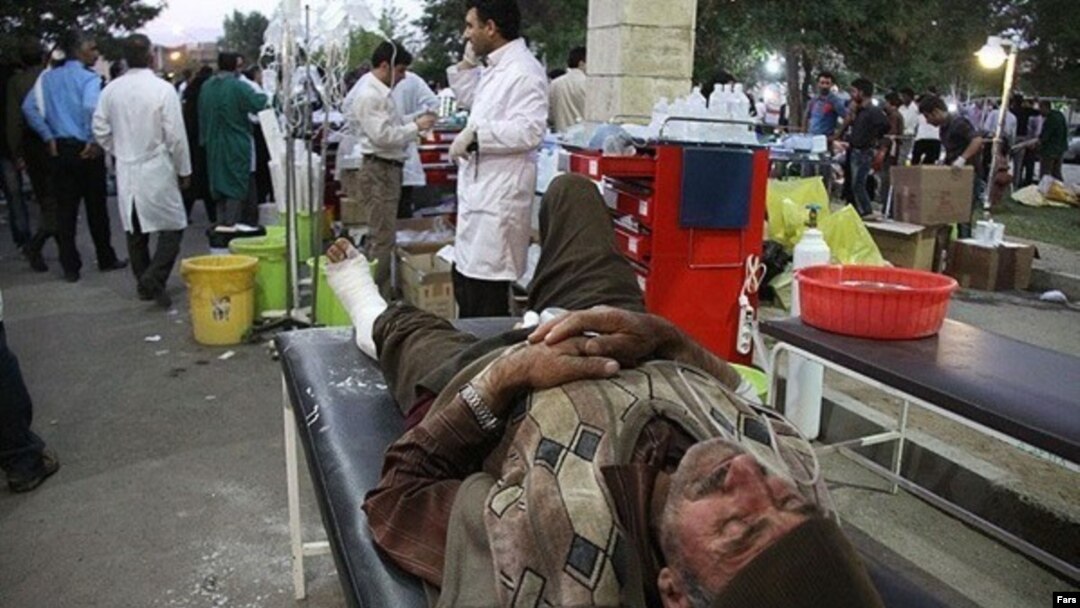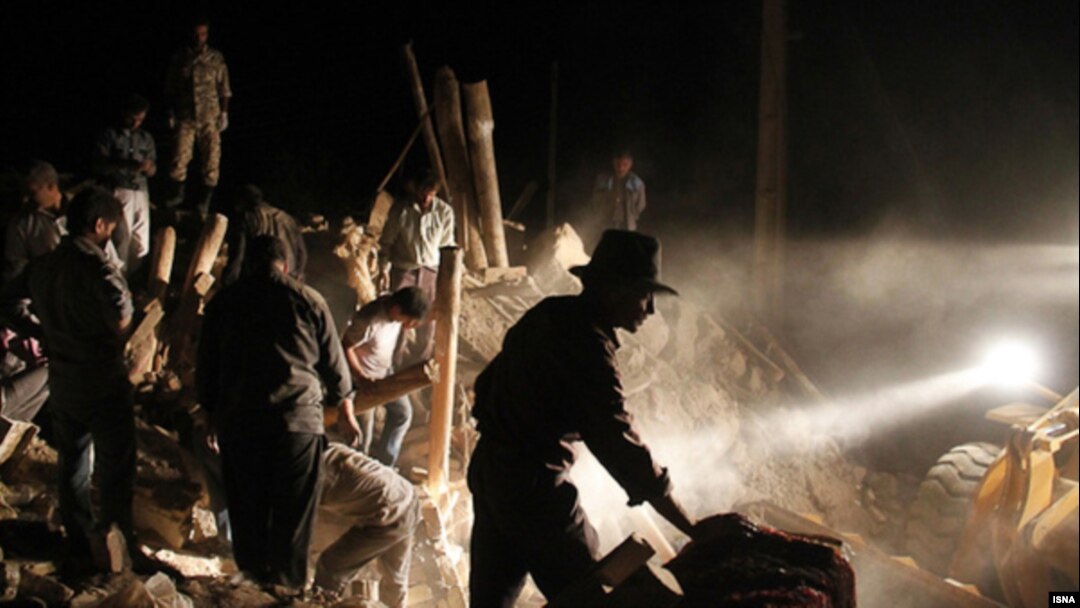Rescue teams in northwestern Iran are searching for survivors in the rubble of two strong earthquakes and several aftershocks that have killed 227 people and injured more than 1,300.
Interior Minister Mostafa Mohammad Najjar told journalists that search-and-rescue operations have ended and efforts have now shifted to providing food and shelter to survivors. He said more than half of the 600 villages in the affected area had been damaged. Some 16,000 people reportedly need emergency shelter.
Najjar praised the work of rescue crews. "The reality is that they have responded really well with their resources to this sudden disaster. They worked exceptionally well, they worked really hard. I personally thank them, as the representative of the president in this time of crisis. I thank the people," he said.
"Difficulties on the Ahar-Tabriz road and other roads to other cities delayed rescuers and relief supplies. People are sleeping on blankets laid out on the ground in parks and they have tents outside cities."
German Foreign Minister Guido Westerwelle wrote immediately to his Iranian counterpart to offer Germany's condolences and assistance in coping with the earthquakes. Russian President Vladimir Putin also telegrammed Iranian President Mahmud Ahmadinejad and offered Russian assistance.
The quakes, measured at magnitude 6.4 and 6.3 by the U.S. Geological Service, struck near the city of Tabriz.
Telephone and communications lines to many villages were reportedly badly damaged, making rescue efforts harder. Reports said phone communication in Tabriz had also been disrupted.
Earthquake Destroys Villages In Iran's Northwest
In a statement, President Ahmadinejad called on authorities to "mobilize all efforts to help the affected populations."



